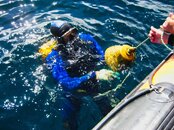bdatud4x4
Registered
Just to let you know the app is a good base to start with if you are new to diving and not sure what weight you will need, Or if you are changing gear and just want to verify. it is real world if you use it correctly..You need a weight check, not some app! This is something that needs real-world applications.
SeaRat




